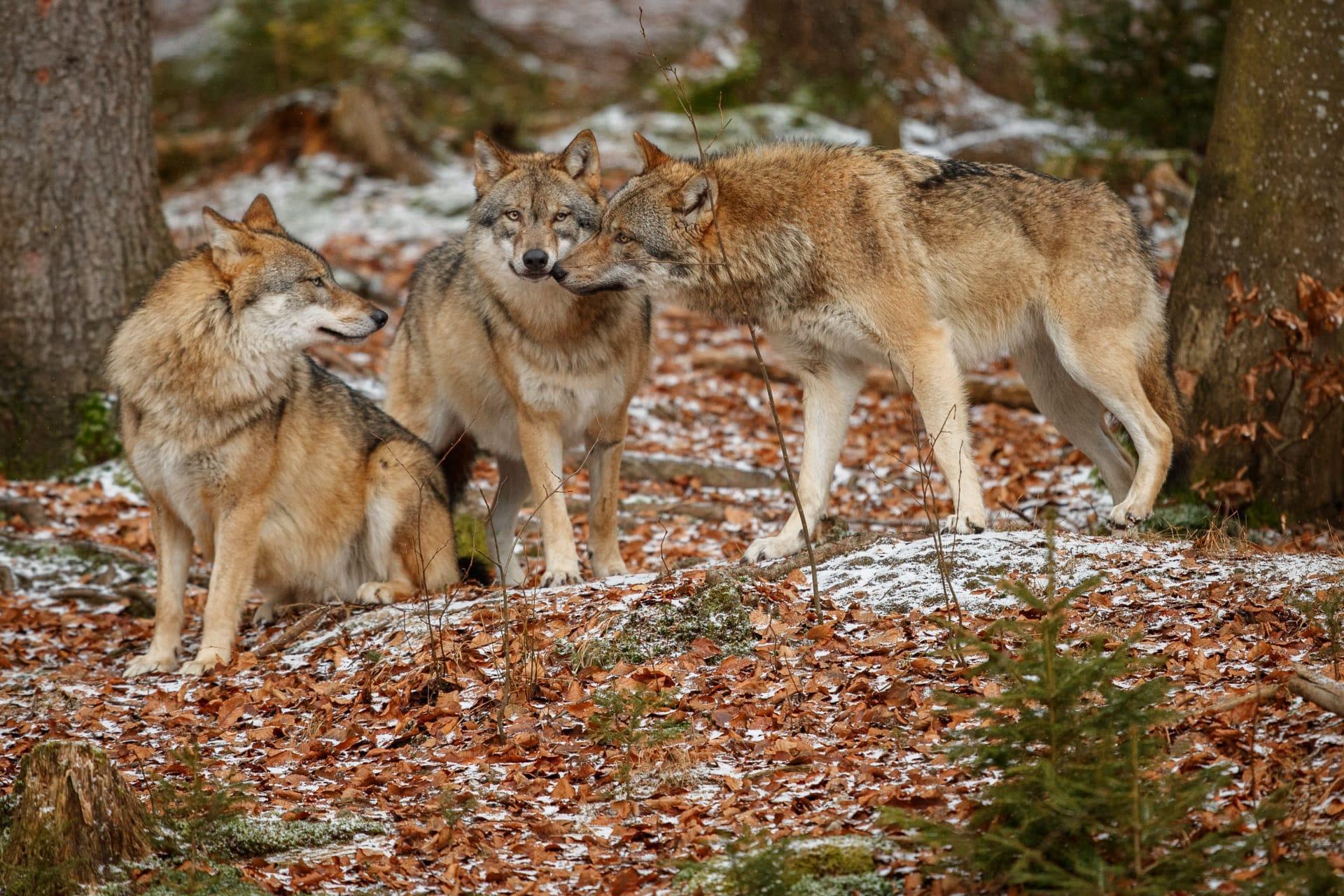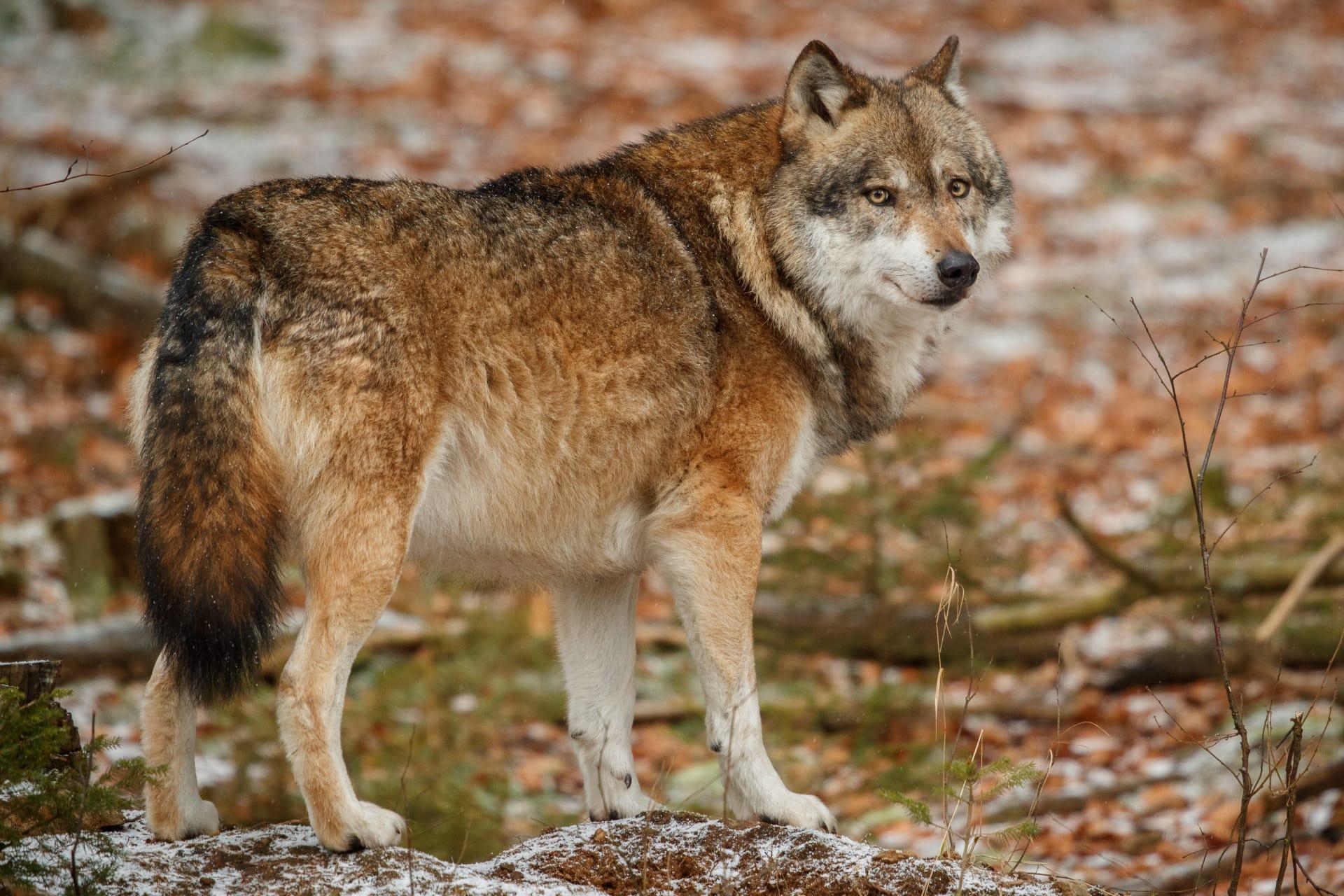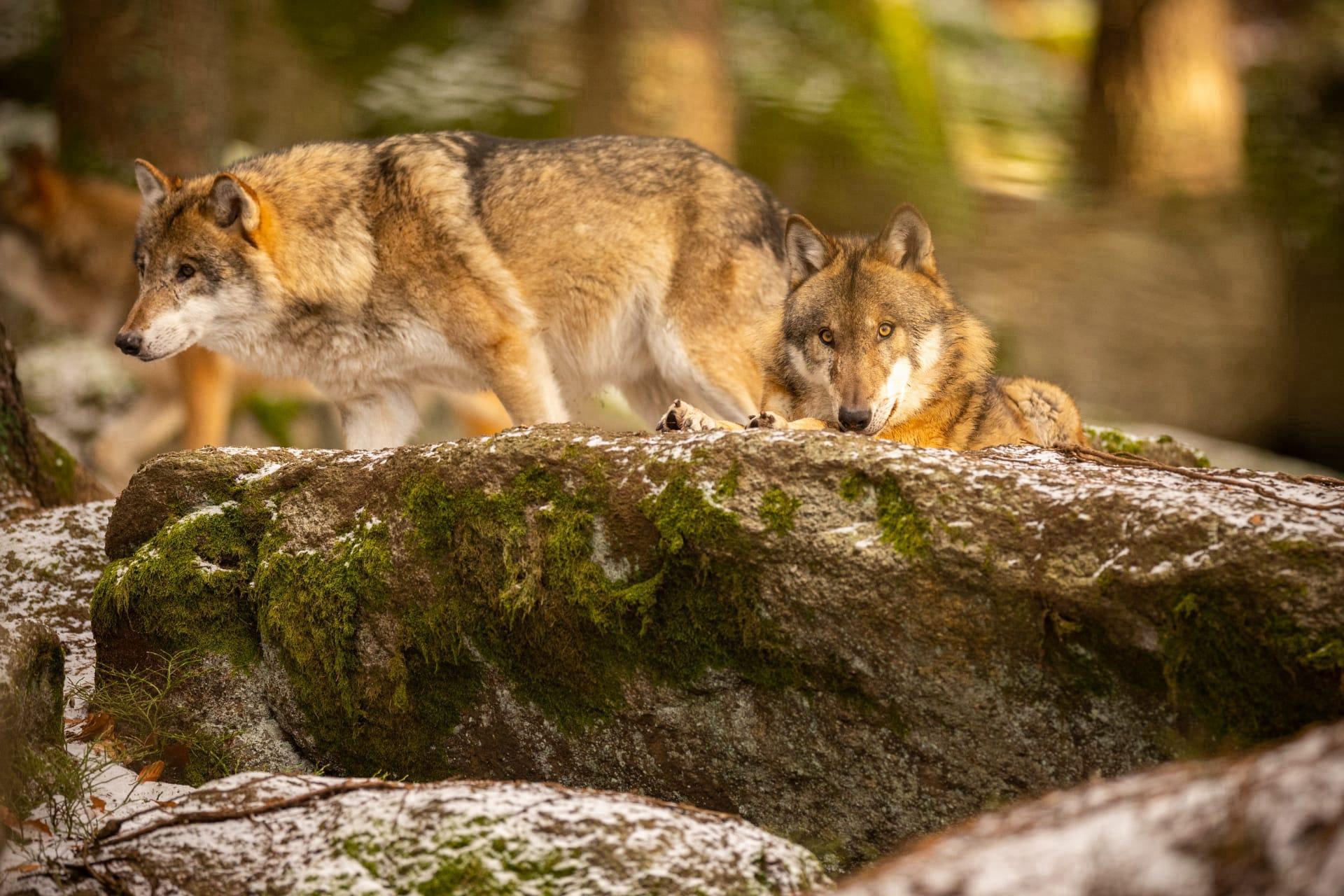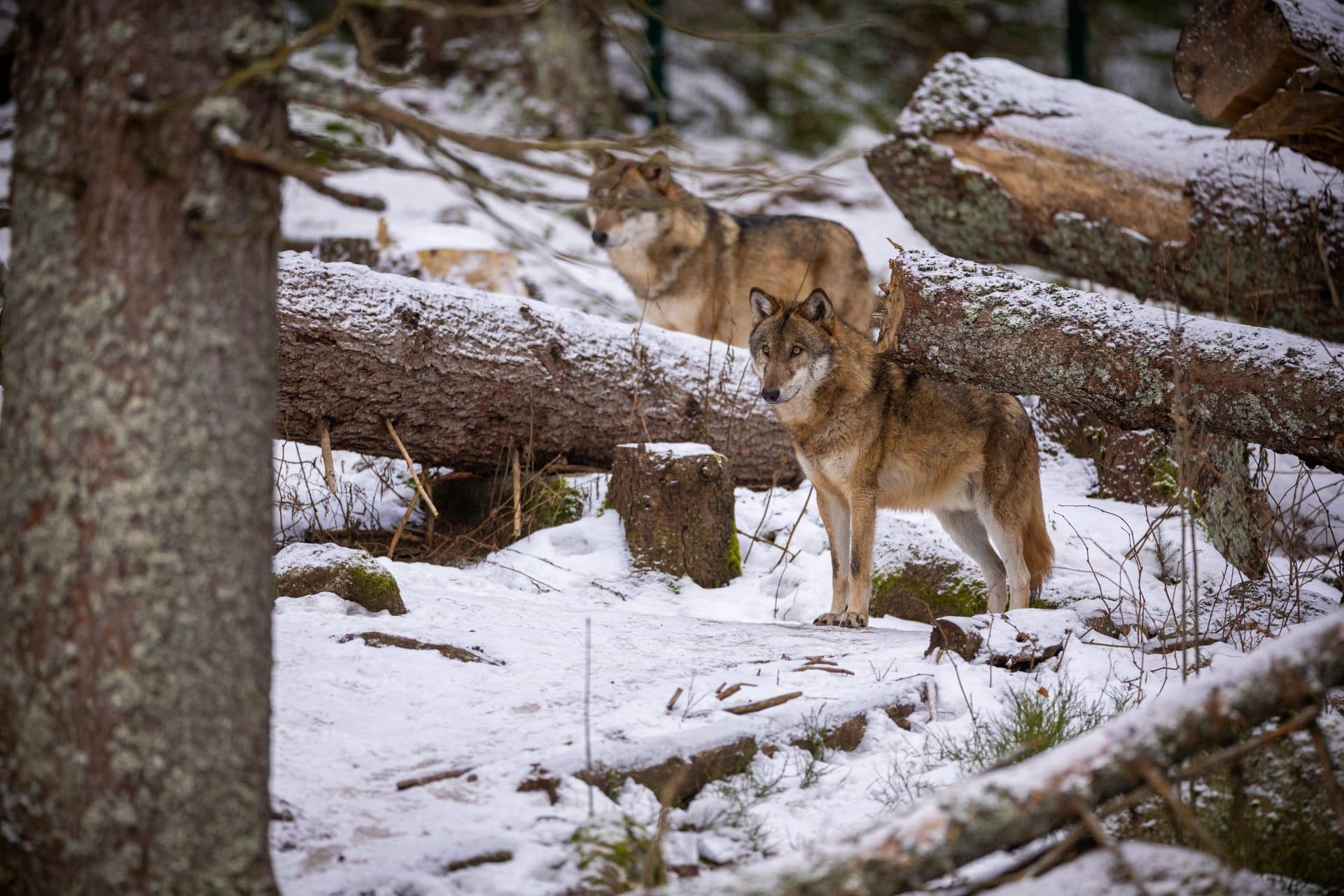1
Wolves have a remarkable ability to cover long distances. A gray wolf, for instance, can travel up to 30 miles (about 48 kilometers) in a single day. This endurance is vital for tracking and hunting prey across vast wilderness areas. Their legs are powerfully built, allowing for both stamina and speed. These wolves are not just wanderers; their travels are purposeful, often directly related to hunting or seeking new territory.
Wolves communicate with a sophisticated system of vocalizations, body language, and scent marking. A wolf's howl, iconic and spine-tingling, can be heard over areas up to 50 square miles (130 square kilometers). It's used for various reasons: to gather the pack, to signal their location, or even to warn other wolves to stay away from their territory. Beyond howling, wolves use facial expressions, tail positions, and ear movements to convey emotions and intentions, forming a complex, non-verbal language.

2
Wolves are known for their complex social structures, known as packs. A typical wolf pack consists of a dominant male and female, known as the alpha pair, their offspring, and occasionally other non-related members. Pack sizes can vary greatly but usually contain between 6 to 10 members. The alpha pair leads the pack in hunting and decision-making, and usually, only the alpha pair will breed, maintaining a stable population and resource balance within the pack's territory.
Remarkably, wolves play a crucial role in their ecosystems as apex predators. They primarily prey on large ungulates like deer, elk, and moose, helping control these populations. This predation has a cascading effect on the ecosystem, often leading to healthier and more diverse plant and animal communities. For example, in Yellowstone National Park, the reintroduction of wolves led to a series of ecological changes, including regrowth of certain tree species and stabilization of riverbanks due to changes in grazing patterns.

3
Wolves have a keen sense of smell, which is about 100 times greater than that of humans. This exceptional olfactory ability enables them to track prey, locate other pack members, and navigate their environment. They can detect scents over a mile away and are adept at following scent trails, which is crucial for hunting and territorial awareness.
The coat of a wolf is not only an insulator but also a camouflage tool. The color of their fur varies depending on the species and habitat, ranging from white in Arctic regions to black, gray, or brown in forests and mountains. This coloration helps them blend into their surroundings, making them more effective hunters. Their fur consists of two layers: a dense, soft undercoat for warmth and a longer, coarse outer coat to repel water and dirt.

4
Wolves have a diverse diet and are known to be opportunistic feeders. While they mainly hunt large ungulates, they also eat smaller mammals, birds, fish, and even fruits and vegetables when available. This adaptability in diet helps them survive in various habitats and conditions. For example, coastal wolves in British Columbia have been observed fishing for salmon, showing their remarkable ability to exploit available food sources.
Wolf pups are born blind and deaf, completely dependent on their mother and pack for survival. The first three months of their lives are critical as they develop their senses and learn essential skills like hunting and social interactions within the pack. Pups start eating solid food at about three weeks old, provided by adult pack members who regurgitate food for them. This period is also when they begin to explore outside of the den, learning about their environment and pack dynamics.

5
Wolves have a complex relationship with humans, featuring in many cultures' folklore and mythology. In some cultures, they are revered as symbols of strength and freedom, while in others, they are feared as predators. This dichotomy reflects the deep and often contradictory ways humans view and interact with the natural world. Conservation efforts for wolves vary greatly across regions, influenced by cultural, environmental, and economic factors.
Each wolf's howl is unique, much like a human fingerprint. This individuality helps members of a pack recognize each other's voices. When a pack howls together, it's not just a chorus but a complex communication network, with each wolf adding its voice at different pitches and durations. This collective howling reinforces social bonds within the pack and establishes their presence in a territory.